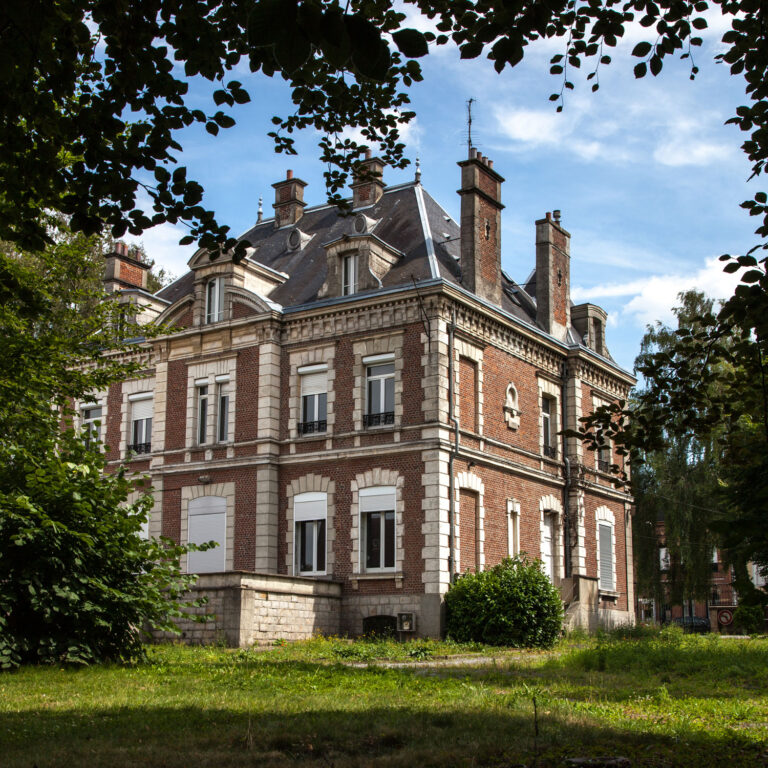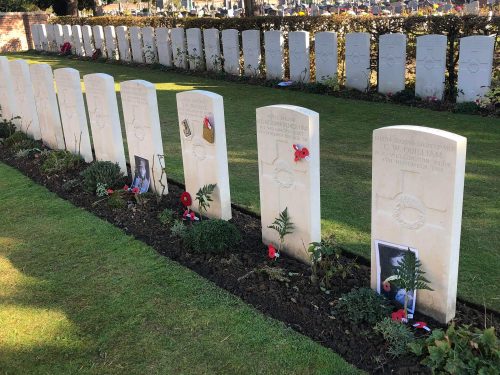Le Quesnoy Today
If you’re a Kiwi, Le Quesnoy needs to be on your ‘must do’ travel list.
You’ll be able to experience New Zealand’s connections past and present with this special northern French town.
A Message from the Mayor
Dear New Zealand friends,
It is with great pride that I observe the development of the New Zealand Museum project in our beautiful town of Le Quesnoy.
The inhabitants of Le Quesnoy are proud and grateful for the links that unite our two nations. The Museum will be an undeniable asset for the town and will allow visitors to witness the friendship which has united us since 4 November 1918.
Each year we commemorate the soldiers from the Rifle Brigade and the sacrifice they made to liberate the town in 1918. We also annually commemorate the extraordinary commitment to freedom by the soldiers from the New Zealand and Australian army corps who took part in a battle on the other side of the world. This commitment is forever engraved in the memory of the inhabitants of the town.
Over the course of more than a century we have become more than friends, we have become almost brothers. We now come together to work on this fabulous New Zealand Museum project, which makes us very proud. This will be a place of emotion, contemplation, remembrance and history, where visitors will learn about both the history of the liberation of the town and also more about your rich culture.
I can’t wait to see this project come to fruition and to welcome more and more of you to our beautiful town of Le Quesnoy.
Vive la Nouvelle-Zélande, vive Le Quesnoy!

Visiting the town
Le Quesnoy is in northern France and was recently classified as a Small City of Character, the first in the Hauts-de-France region. Founded c.1150 and surrounded by 16th century walls, the town has a long history.
There are a few New Zealand Street signs in the old town, and on the outskirts, on Rue du 11 Novembre 1918, is École Maternelle Docteur Averill. This preschool is named after Leslie Averill, the first man over the ladder on the 4th of November 1918. While visitors can’t go in, the children here certainly know the story about the New Zealanders who liberated the town in 1918. There’s even some classic New Zealand children’s books on the shelves.
Outside the walled city, the beautiful lakes are popular in summer, and the poppies flourish by the ramparts.
If you happen to visit in August, you might see two giant figures as part of a carnival. Pierrot Bimberlot was created in 1904, and in 2004 a giant Māori figure was created in accompaniment.
Le Quesnoy is located close to the border of Belgium, just a 2.5h train north from Paris or 1h train from Lille.
The New Zealand Memorial and the New Zealand Garden
The place where the New Zealanders scaled the wall by ladder in 1918 is easily accessed. One way is to go through the tunnel (blocked up at the time of the occupation) at the signposted point on Bd Jeanne d’Arc. Turn left out of the tunnel and imagine a ladder on this ledge. It’s a sheer wall to attempt climbing at the best of times, let alone under fire. This is the infamous ‘sluice gate position’, the only place a ladder had any chance of reaching the top, due to the height of it above the ground. Take the narrow path across the moat and walk some 20 metres to the left, where you’ll see the New Zealand Memorial on the wall.
You can also come in from Pl. du Général Leclerc, heading to the Avenue des Néo Zélandais. You’ll find the start of it under the brick arch, with the Place des All Blacks sign to the left. It is a lovely stroll to the memorial from here along the 16th century walls. Don’t forget to also enjoy the New Zealand Gardens, close to the memorial. Planted in 2018 for the centenary it was designed by award winning New Zealand landscape designer Xanthe White.
Visiting on ANZAC Day or 4th November
Timing a visit around ANZAC Day as a Kiwi is well worth it. There is a dawn service, and a procession to the New Zealand Memorial. Back in the town square, the French fallen are acknowledged at the monument by the Town Hall.
Often New Zealand Defence Force Personnel are here for this event, and you’ll see a spine-tingling haka. The local school children have been known to also perform the haka, much to the delight of visiting Kiwis. These are children who can also sing the New Zealand National Anthem in both English and Māori.
While the 4th of November is a day that never changes for commemorations, ANZAC Day events are usually on the nearest Sunday to the 25th of April.
The New Zealand Museum and Visitor Centre – a Living Memorial
Rue Achille Carlier in the heart of Le Quesnoy is named after the town’s WWI Mayor. Here you will find his former manor house sitting on a hectare of ground. This site, owned by the New Zealand Memorial Museum Trust – Le Quesnoy, is where the story of the liberation of Le Quesnoy and the wider story of WWI will be told. The gracious manor house will be returned to its former glory through a renovation process in 2022, with an immersive and emotive experience planned in 2023. Our living memorial will be a place to connect with the past and the present and celebrate friendships.
While other allies in Australia, Canada and South Africa all built their own museums and visitor centres on the Western Front post WWI, New Zealand has not. However, this 100-year delay has presented us with an opportunity to create something truly engaging and fit for purpose in the 2020s and beyond. With Wētā Workshop creating the visitor experience at Le Quesnoy, and with their global reputation for producing incredible experiences, opening day of our living memorial in Le Quesnoy will be exciting.

The Commonwealth War Graves Cemeteries
In WWI, the Kiwis were on the Western Front for 130 weeks. On average 96 people were killed and another 270 wounded per week. By the time the war would end, some 12,500 New Zealanders would be buried far from home, in France and Belgium. They lay in many of the Commonwealth War Graves Cemeteries all over Northern France, with Le Quesnoy and the surrounding area no exception.
In the Le Quesnoy, Romeries and Vertigneul cemeteries you’ll find many of the men who died in November 1918. Look for the silver fern on the headstones. Clear files inside the gates always holds maps and names and there is a visitor book to record your thoughts. If you’d like to find a particular cemetery or grave, the Commonwealth War Graves Commission (CWGC) website will locate it and the Online Cenotaph can tell you more about the New Zealander who died.
Twinned towns - Cambridge and Le Quesnoy
The friendship between Cambridge in New Zealand and Le Quesnoy in France is well established. Officially twinned towns since 1999, the relationship started straight after WWI. Rev Clive Mortimer Jones, one of 140 New Zealand ministers who served in WWI, returned to his parish at St Andrews Church in Cambridge and commissioned a stained-glass window depicting Gallipoli on one side and Le Quesnoy on the other. The ashes of Laurence (Curly) Blyth, the last remaining soldier who fought at Le Quesnoy, are buried here in the French garden under the New Zealand and French flags. Directly across the road, a sculpture opened in 2018 also reflects the connection between the countries.
The twinned towns have each added commemorations that are important to the other. Le Quesnoy commemorates ANZAC Day (25 April), and Cambridge commemorates Armistice Day (11 November.) Bastille Day (14 July) is also celebrated in Cambridge with French themed events, shop fronts and eateries. Schools in Le Quesnoy and Cambridge have close connections and young people travel both ways to learn about the other country’s culture first hand. The Cambridge Brass Band travelled to Le Quesnoy in 2018 for the centenary and were taken aback when the residents of a local rest home knew every word of Pokarekare Ana. They loved the young people so much, they renamed their lounge The Cambridge Lounge. Both towns have websites dedicated to learning about the other town and celebrating their connection.
Le Quesnoy wanted to add a silver fern to its crest post war, but was unable to. However, the silver fern of New Zealand and the oak leaf of Le Quesnoy (the City of Oaks) have naturally entwinned through the two Friendship Associations over the course of time.
